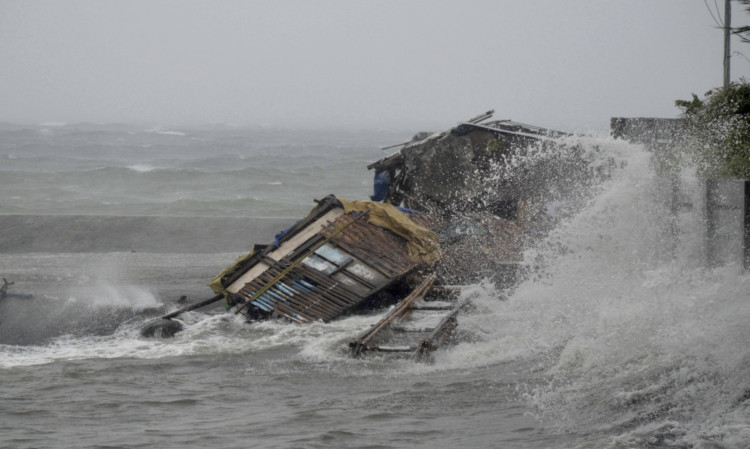One of the strongest storms on record killed more than 100 people whose bodies lay in the streets of one of the Philippines’ hardest-hit cities.
Captain John Andrews, deputy director general of the Civil Aviation Authority of the Philippines, said more than 100 others were injured in the city of Tacloban on Leyte Island, where Typhoon Haiyan hit yesterday.
With power and most communications knocked out a day after the typhoon ravaged the central region, Capt Andrew said the information about the deaths was relayed to him by his staff in Tacloban.
Nearly 750,000 people were forced to flee their homes and damage was believed to be extensive.
Weather experts said Haiyan had sustained winds of 147mph with gusts of 170mph when it made landfall. By those measurements, Haiyan would be comparable to a strong Category 4 hurricane in the US, nearly in the top category, a 5.
Hurricanes, cyclones and typhoons are the same thing – they are just called different names in different parts of the world.
Because of cut-off communications in the Philippines, it was impossible to know the full extent of casualties and damage. Officially, four people were listed as dead before the latest information from Tacloban came in.
Southern Leyte governor Roger Mercado said the typhoon ripped roofs off houses and triggered landslides that blocked roads.
The dense clouds and heavy rains made the day seem almost as dark as night, he said.
“When you’re faced with such a scenario, you can only pray, and pray and pray,” Mr Mercado said, adding that mayors in the province had not called in to report any major damage.
“I hope that means they were spared and not the other way around. My worst fear is there will be massive loss of lives and property.”
Eduardo del Rosario, head of the disaster response agency, said the speed at which the typhoon sliced through the central islands – 25 mph – helped prevent its 375-mile band of rain clouds from dumping enough of their load to overflow waterways. Flooding from heavy rains is often the main cause of deaths from typhoons.
“It has helped that the typhoon blew very fast in terms of preventing lots of casualties,” regional military commander Lt Gen Roy Deveraturda said. He said the massive evacuation of villagers before the storm also saved many lives.
